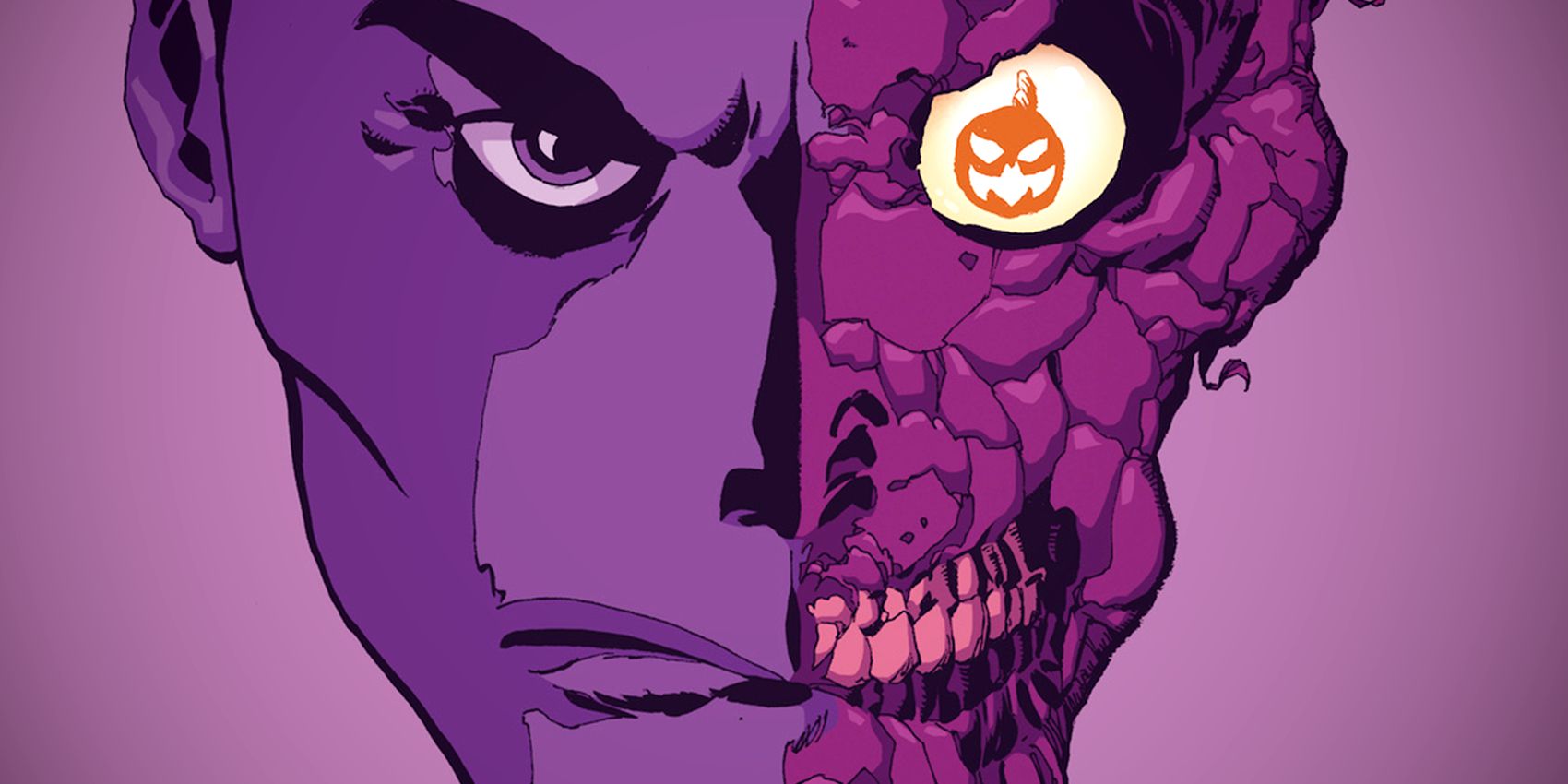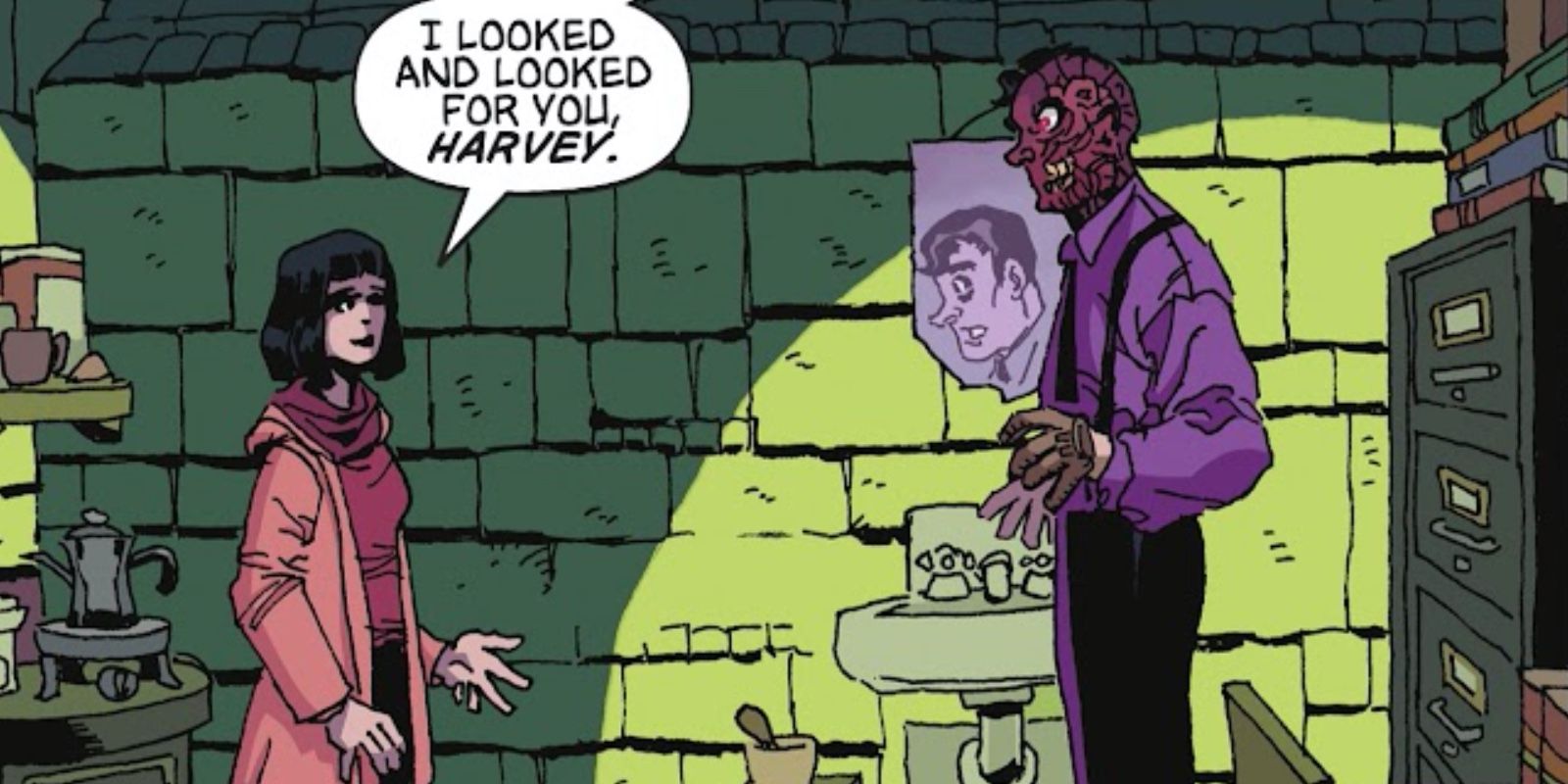
Warning: Spoilers for Batman: The Long Halloween Special #1
In Batman: The Long Halloween Special #1, DC reveals Batman's enemy Two-Face in an extremely clever way. Batman: The Long Halloween Special #1 is a one-shot special that expands upon the iconic graphic novel’s story of the same name published 25 years ago.
Legendary comics creators Jeph Loeb and Tim Sale teamed up to give readers a new addition to their beloved 13-issue comic series Batman: The Long Halloween published in 1996. Batman: The Long Halloween Special #1 provides readers with some long-awaited answers of the comic’s most notorious question: Who is the Holiday Killer? According to writer Jeph Loeb, that question was actually answered over two decades ago in the original series. But Loeb confirmed that only the most astute readers picked up on the mystery of the Holiday Killer’s identity. Aside from the newest issue’s main story arc, readers also get more insight into Batman's contempt for his former friend-turned-foe Two-Face (aka Harvey Dent). Prior to Batman and Dent’s falling out, Harvey was Gotham’s leading district attorney. However in his attempts to take down one of Gotham's biggest mob bosses Sal Maroni, Maroni throws acid in Harvey’s face leaving him hideously scarred on one side. His mental state crumbled and he descended into a life marked by madness, duality, and tension with Batman.
In Batman: The Long Halloween Special #1, written by Jeph Loeb and illustrated by Tim Sale, readers see a tense conversation between Batman and Jim Gordon where Gordon reminisces about their past allyship with Harvey Dent. Batman, upset about Two-Face, vanishes. The next few panels take readers underground into the Gotham Sewer system where Solomon Grundy and Two-Face are residing. Two-Face’s wife, Gilda, shows up and Solomon lets her past the door so she can see him. Harvey’s living quarters look rather homey and there’s a small bathroom nook with a sink and a jagged-edged mirror. Upon seeing her, Two-Face is shocked as the two have been apart for some time. As he questions how long she’s been back, he’s shown facing her and readers see Two-Face from only one side—his scarred side. But, the mirror to his right shows his “good side."

Duality is present in each aspect of this panel. Two-Face is considered a villain and he’s currently taking up residence in the sewer system, but his room has a lived-in, almost cozy feel to it. There’s a large bed, a coffee machine, and extra toilet paper rolls are visible. Moreover, he’s at odds with his current “evil” state and his past life as someone who valued law and order. Gilda Dent is a representation of his life before crime yet he stands there, in front of her, enmeshed in his own madness. This emphasizes the duality between good and bad, past and present. Readers are shown Two-Face, but the mirror depicts the old Harvey Dent. There’s also a balance between light and dark. The room is colored a dark green but patches of bright green are splashed throughout. They each stand in lightness and darkness. These opposing elements work together to capture Two-Face, a man who constantly walks the fine line between good and evil but can’t seem to choose which side he belongs to.
Two-Face’s dual nature normalizes the fact that multiple aspects of one’s identity can be true at once. Most people are neither wholly good nor wholly bad. People often live in a grey area where opposing characteristics can live side by side. Two-Face’s character in Batman: The Long Halloween Special #1 serves as a reminder that duality exists within everyone—a concept that resonates with most.
from ScreenRant - Feed https://ift.tt/3EN8zGa
via IFTTT
No comments:
Post a Comment